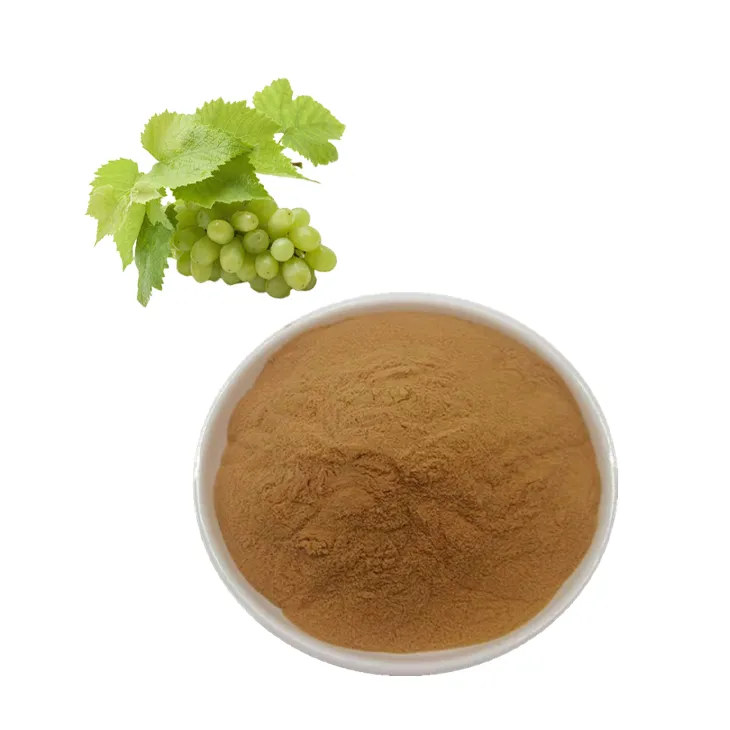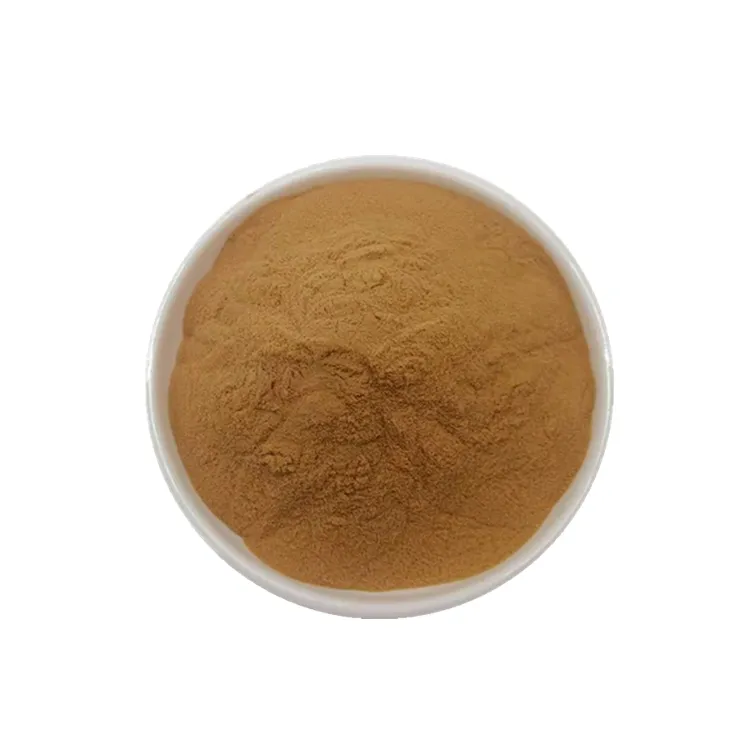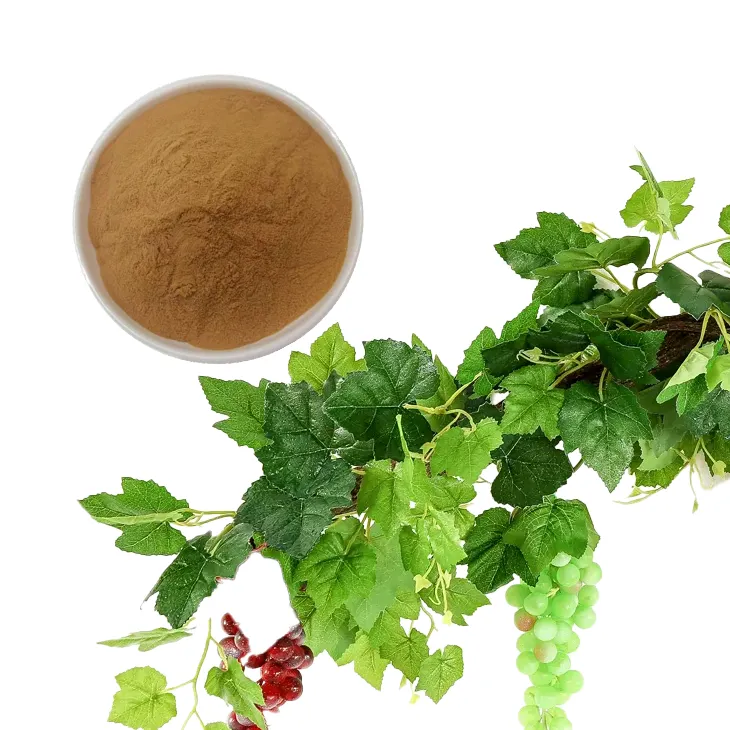- 0086-571-85302990
- sales@greenskybio.com
Supercritical Carbon Dioxide Extraction of Grape Leaf Extracts
2024-11-28

1. Introduction
Grape leaves have long been an overlooked part of the grapevine, yet they are rich in various bioactive compounds. The extraction of these valuable compounds from grape leaves has become an area of increasing interest in recent years. Supercritical carbon dioxide (CO₂) extraction is emerging as a highly promising method for this purpose.
Traditional extraction methods often face limitations such as the use of large amounts of organic solvents, which can lead to solvent residues in the final product and potential environmental pollution. In contrast, supercritical CO₂ extraction offers several advantages. It is a "green" technology that can minimize environmental impact while efficiently extracting the desired compounds from grape leaves.

2. Compounds in Grape Leaves
2.1 Polyphenols
Grape leaves are a significant source of polyphenols. These are a diverse group of compounds that include phenolic acids, stilbenes, and lignans. Polyphenols are known for their antioxidant properties. For example, they can scavenge free radicals in the body, which are associated with various diseases and aging processes. In grape leaves, polyphenols play a crucial role in protecting the plant from environmental stresses such as UV radiation and pathogen attacks. The extraction of polyphenols from grape leaves can potentially provide a natural source of antioxidants for human consumption.
2.2 Flavonoids
Flavonoids are another important class of compounds present in grape leaves. They are a subclass of polyphenols and include compounds such as flavones, flavonols, and anthocyanins (although anthocyanins are more commonly associated with grape berries). Flavonoids have been shown to have a wide range of health - promoting effects. For instance, they can help in reducing inflammation in the body, which is linked to many chronic diseases such as heart disease, arthritis, and diabetes. The extraction of flavonoids from grape leaves could lead to the development of new natural health products.

3. Supercritical CO₂ Extraction Process
3.1 Principles
Supercritical CO₂ extraction operates based on the unique properties of carbon dioxide in its supercritical state. Carbon dioxide becomes supercritical when it is above its critical temperature (31.1 °C) and critical pressure (73.8 bar). In this state, it has properties intermediate between those of a gas and a liquid. It has a high diffusivity like a gas, which allows it to penetrate into the matrix of the grape leaves easily. At the same time, it has a density similar to that of a liquid, enabling it to dissolve a wide range of compounds effectively.
3.2 Equipment and Procedure
The supercritical CO₂ extraction process typically involves a high - pressure extraction vessel, a pump to pressurize the CO₂, a temperature control system, and a separator to collect the extracted compounds. First, the grape leaves are prepared by drying and grinding them to an appropriate particle size. Then, the supercritical CO₂ is passed through the sample in the extraction vessel at the desired temperature and pressure conditions. After the extraction, the pressure is reduced in the separator, causing the CO₂ to return to its gaseous state and leaving the extracted compounds behind.

4. Advantages of Supercritical CO₂ Extraction
4.1 Environmental Friendliness
One of the major advantages of supercritical CO₂ extraction is its environmental friendliness. As mentioned earlier, traditional extraction methods often rely on organic solvents such as hexane or ethanol. These solvents can be hazardous to the environment if not properly disposed of. In contrast, carbon dioxide is a non - toxic, non - flammable gas that is abundantly available in the atmosphere. The use of supercritical CO₂ reduces the generation of waste and solvent residues, making it a more sustainable extraction method.
4.2 Selectivity
Supercritical CO₂ extraction also offers high selectivity. By adjusting the temperature and pressure conditions, it is possible to target specific compounds in the grape leaves. For example, different polyphenols and flavonoids may have different solubility in supercritical CO₂ at various temperature - pressure combinations. This allows for the precise extraction of the desired compounds, which can be beneficial for obtaining high - quality extracts with specific bioactive properties.
4.3 Product Quality
The extracts obtained by supercritical CO₂ extraction are generally of high quality. Since there are no solvent residues (or very minimal if any), the extracts are purer compared to those obtained by traditional solvent - based methods. This can enhance the safety and efficacy of the Grape Leaf Extracts for various applications, such as in the food, pharmaceutical, and cosmetic industries.
5. Potential Health - Promoting Effects of Grape Leaf Extracts
5.1 Immune System Boosting
The compounds present in Grape Leaf Extracts, such as polyphenols and flavonoids, may play a role in boosting the human immune system. They can stimulate the production of immune cells or enhance the function of the immune system in various ways. For example, some polyphenols have been shown to modulate the activity of immune cells like macrophages, which are involved in the body's defense against pathogens.
5.2 Protection Against Chronic Diseases
There is growing evidence that grape leaf extracts can be beneficial in protecting against chronic diseases. The antioxidant and anti - inflammatory properties of the compounds in the extracts can help in reducing the risk factors associated with chronic diseases. For instance, in the case of heart disease, the anti - inflammatory effects of flavonoids can help in reducing inflammation in the blood vessels, which is a key factor in the development of atherosclerosis.
5.3 Use as Natural Additives
Grape leaf extracts can also be used as natural additives in various products. In the food industry, they can be added to foods and beverages as natural antioxidants to extend the shelf life and improve the nutritional value. In the cosmetic industry, the antioxidant and anti - inflammatory properties of the extracts can be utilized in skin care products to protect the skin from oxidative damage and inflammation.
6. Conclusion
In conclusion, the extraction of grape leaf extracts using supercritical carbon dioxide is a highly promising approach. Grape leaves are a rich source of valuable compounds such as polyphenols and flavonoids, and supercritical CO₂ extraction offers a clean, efficient, and selective method for obtaining these compounds. The environmental friendliness of this method, along with the potential health - promoting effects of the obtained extracts, makes it an area worthy of further research and development. Future studies could focus on optimizing the extraction conditions to maximize the yield and bioactivity of the extracts, as well as exploring new applications in different industries.
FAQ:
Q1: What are the main compounds in grape leaves?
Grape leaves mainly contain compounds such as polyphenols and flavonoids.
Q2: Why is supercritical CO₂ extraction a better choice than traditional extraction methods for grape leaf extracts?
Supercritical CO₂ extraction is a better choice because it is clean and efficient. It can precisely target the desired compounds in grape leaves and is environmentally friendly as it reduces waste and solvent residues.
Q3: What are the potential health - promoting effects of grape leaf extracts?
The grape leaf extracts may play important roles in improving human immunity, protecting against chronic diseases, and can be used as natural additives in various products.
Q4: How does supercritical CO₂ extraction work in extracting grape leaf extracts?
Supercritical CO₂ has properties between a gas and a liquid. It can penetrate the grape leaves and selectively dissolve the target compounds. By adjusting the pressure and temperature, the solubility of different compounds can be controlled, thus achieving the extraction of the desired substances from the grape leaves.
Q5: Can the grape leaf extracts obtained by supercritical CO₂ extraction be directly used in food products?
It depends on various factors. While they may have potential as natural additives, further research is needed to ensure safety and compliance with food regulations. The extracts need to be tested for any potential toxicity and their impact on the quality and stability of food products.
Related literature
- Supercritical Fluid Extraction of Bioactive Compounds from Grape Leaves"
- "The Potential of Grape Leaf Extracts Obtained by Supercritical CO₂ in Health and Nutrition"
- ▶ Hesperidin
- ▶ citrus bioflavonoids
- ▶ plant extract
- ▶ lycopene
- ▶ Diosmin
- ▶ Grape seed extract
- ▶ Sea buckthorn Juice Powder
- ▶ Beetroot powder
- ▶ Hops Extract
- ▶ Artichoke Extract
- ▶ Reishi mushroom extract
- ▶ Astaxanthin
- ▶ Green Tea Extract
- ▶ Curcumin Extract
- ▶ Horse Chestnut Extract
- ▶ Other Problems
- ▶ Boswellia Serrata Extract
- ▶ Resveratrol Extract
- ▶ Marigold Extract
- ▶ Grape Leaf Extract
- ▶ blog3
- ▶ blog4
-
Standard - process Nutmeg extract.
2024-11-28
-
The best honeysuckle pollen on the market.
2024-11-28
-
The Best Rosemary Extract in 2024.
2024-11-28
-
Curcumin Extract
2024-11-28
-
Polygonum multiflorum extract
2024-11-28
-
Almond Extract Powder
2024-11-28
-
Lemon Juice Powder
2024-11-28
-
Agaricus Blazei Extract
2024-11-28
-
Lavender Extract
2024-11-28
-
Grape Seed Extract
2024-11-28
-
Mango flavored powder
2024-11-28
-
Astaxanthin
2024-11-28
-
Aguaje Extract
2024-11-28





















